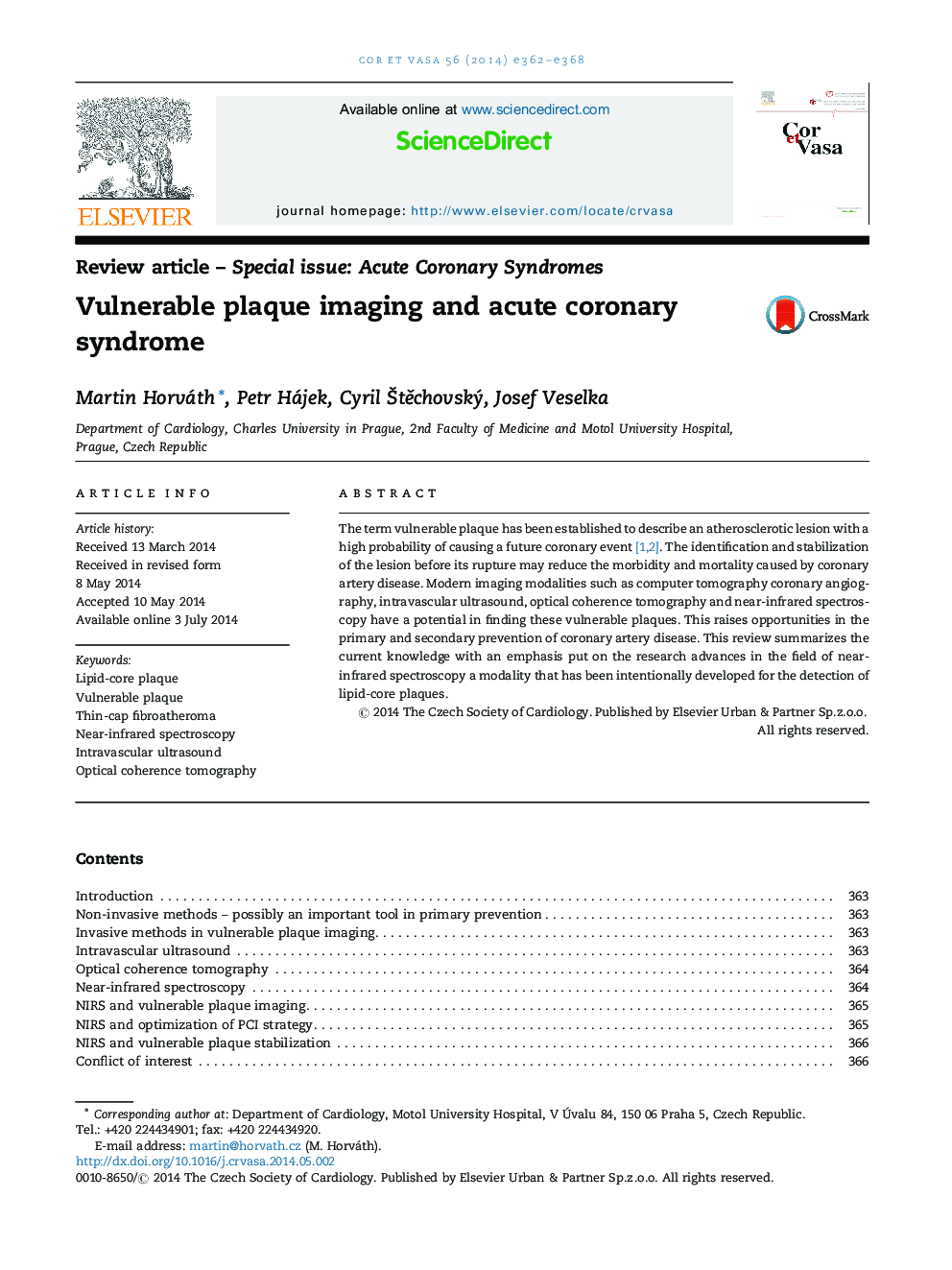| Article ID | Journal | Published Year | Pages | File Type |
|---|---|---|---|---|
| 2731555 | Cor et Vasa | 2014 | 7 Pages |
The term vulnerable plaque has been established to describe an atherosclerotic lesion with a high probability of causing a future coronary event [1] and [2]. The identification and stabilization of the lesion before its rupture may reduce the morbidity and mortality caused by coronary artery disease. Modern imaging modalities such as computer tomography coronary angiography, intravascular ultrasound, optical coherence tomography and near-infrared spectroscopy have a potential in finding these vulnerable plaques. This raises opportunities in the primary and secondary prevention of coronary artery disease. This review summarizes the current knowledge with an emphasis put on the research advances in the field of near-infrared spectroscopy a modality that has been intentionally developed for the detection of lipid-core plaques.
